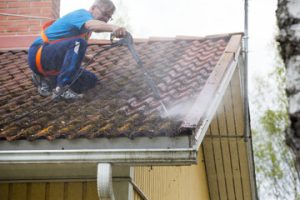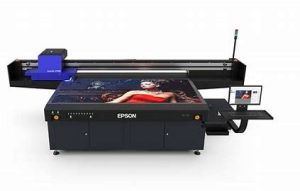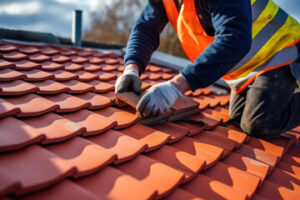Home Loans are a crucial part of the journey to homeownership and provide several benefits including affordable home ownership, tax perks, and long repayment tenures. However, the home loan that is right for you depends on your unique circumstances and financial goals.

This article will cover the most common types of Sparrow Home Loans and their requirements to help you make an informed decision.
Owning a home is a dream of many individuals and families, but it can be difficult to fulfill without financial assistance. This is where a home loan comes in, which helps finance the purchase or construction of residential properties. Home loans also provide attractive tax benefits and flexible repayment options. But not all home loans are created equal, and the type you choose can have a significant impact on your down payment, monthly payments and overall equity in your home.
The types of home loans available include conventional loans, jumbo loans, government-backed mortgages and fixed- and adjustable-rate mortgages. Conventional loans are privately financed and serviced by mortgage lenders, while jumbo loans are typically only offered by large banks and credit unions. Government-backed loans are backed by a federal agency and can be easier to qualify for.
Fixed-rate home loans offer predictable interest rates for a specific period of time, which makes them ideal for those who want the security of knowing their monthly payments will remain the same over the life of the loan. They are usually required to have a larger down payment than other loan types, and may require PMI (private mortgage insurance).
Variable-rate home loans allow you to change your interest rate at the end of the fixed period, which can help save money over the long term. However, these loans often have higher initial interest rates and can be difficult to qualify for. Some mortgage loan programs offer split loans, which let you fix a portion of your loan and keep the rest variable, giving you the best of both worlds.
Conventional and jumbo loans can be used to finance a range of property types, including primary residences, second homes, vacation homes, rental properties, and investment properties. But they may have stricter requirements than other types of loans, such as minimum credit scores and debt-to-income ratios. Government-backed mortgages, on the other hand, can be less restrictive and are a good option for borrowers with low credit scores or limited income. They may also have lower upfront fees, such as the application fee and closing costs.
Requirements
When you apply for a home loan, you’ll need to provide financial information, like pay stubs and bank statements, along with personal identification. Many lenders also require a recent credit report and verification of employment. If you’re self-employed, you may need to supply tax returns and 1099s. Lenders will also check your credit and assess your debt-to-income ratio to make sure you can afford the mortgage. In addition, some home loans are subject to income limits or require a larger down payment. You can find out more about the requirements by applying for a mortgage pre-approval or attending home buyer education sessions.
To qualify for a home loan, you must have adequate savings to cover the down payment and closing costs. The lender will want to see proof of these reserves in the form of bank statements, retirement accounts and other investments. You must also meet the minimum credit score requirement set by the lender or program administrator. A lower credit score typically results in a higher interest rate, while a high credit score can qualify you for a lower rate.
Some home buyers can benefit from specialized mortgage programs that offer favorable terms. For example, first-time home buyer loans are designed to help aspiring homeowners who may not have the resources to buy their first home. Other perks that come with these types of loans include appealing tax incentives and flexible repayment options.
The process of getting a home loan can take up to six months or longer. To speed up the process, you can complete the following steps:
Apply for a pre-approval with the lender of your choice. This is an informal review that estimates how much you could borrow. It doesn’t guarantee approval, but it will give you a better idea of your budget and help you negotiate with sellers.
Fill out the application forms for each loan program and additional assistance programs that you are interested in. Many of these forms can be submitted online or by mail. Ensure that all required documentation is provided. If your applications are approved, you’ll receive a commitment letter that outlines the terms and conditions of your loan.
Taxes
Home loans are a popular way for individuals to become homeowners without having to pay the entire purchase price upfront. However, it is important to understand the taxes associated with these loans before applying for one. There are several tax perks available to help reduce the overall cost of homeownership.
Home equity loans allow homeowners to access the value of their homes in order to fulfill a variety of financial needs, such as debt consolidation and home improvements. They are also tax-deductible in some cases. However, the tax implications of these loans can vary based on how the funds are used and changes to tax laws.
Generally, home equity loan interest is deductible if the borrowed funds are used to buy, build, or improve the property that secures the loan. However, new rules introduced by the Tax Cuts and Jobs Act (TCJA) may limit deductions. These rules will affect borrowers who take out home equity loans after 2025.
Taxes on home loans can be complicated, so it is essential to consult a tax professional before applying for a loan. This will ensure that you are aware of any potential tax ramifications and are able to make the best decision for your unique situation.
Lenders typically use a borrower’s tax returns to verify their income and determine whether they can afford the loan payments. In addition, lenders may review other financial documents, such as bank statements and pay stubs. They may also check credit reports to see if a borrower has outstanding tax liabilities.
If a lender finds that a borrower owes back taxes, they will usually notify them of the issue. This is done to protect the lender’s interests and ensure that the borrower can repay the loan. Lenders may also investigate other sources of income, such as employment contracts and rental income.
If you have unpaid taxes, it is important to clear them before trying to obtain a home loan. Tax debt can damage your credit score and make lenders hesitant to approve your loan application. You can clear your tax debt by paying the amount owed or setting up an installment plan with the IRS.
Interest
Home loans are often accompanied by attractive interest rates, which help borrowers to save money on their debt burden. Additionally, these loans also come with long repayment tenures, making them easier to manage on a monthly basis. Furthermore, a home loan’s potential capital appreciation can result in wealth creation for the borrower over time.
While there are many benefits of taking out a home loan, it is essential for borrowers to understand the intricacies of the process before making any financial decisions. By conducting thorough research and evaluating various home loan offers, borrowers can find the ideal solution to fulfill their homeownership dreams. This includes ensuring that the loan is suitable for their individual financial capabilities and repayment capabilities. In addition, borrowers should take advantage of the tax incentives associated with home loans to further boost their savings. Furthermore, if they are dissatisfied with their current lender, borrowers may be able to transfer the balance of their home loan to another institution without paying any prepayment penalties.



